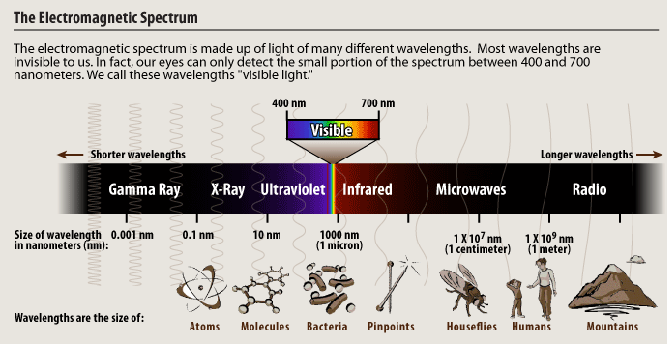You know that the electromagnetic spectrum is divided into broad categories of gamma rays, X-rays, ultraviolet, optical, infrared, submillimeter (microwaves), and radio. These categories are arranged in decreasing order of energy and increasing order of wavelength. Gamma ray photons have the most energy and smallest wavelengths of any part of the EM spectrum, in the range of 100,000 eV and above, with corresponding wavelengths of 0.01 nanometers or less.
Space scientists – physicists and astronomers – study different phenomena in space to understand different physical properties. Gamma ray astronomers talk about very high frequency and very short wavelengths. In fact, we prefer to think in terms of energy. People who work in the infrared region like to think in terms of wavelengths. Astronomy that looks at lower energy levels is usually interested in atomic and molecular physics, but in the gamma-ray spectrum the energy scale is at the MeV region, so we are talking about things that happen in nuclei or in plasmas of temperatures exceeding tens of millions degrees Kelvin. Gamma-ray astronomy is really about answering questions about nuclear astrophysics using the incredibly violent, incredibly high-temperature laboratories that exist in space.


